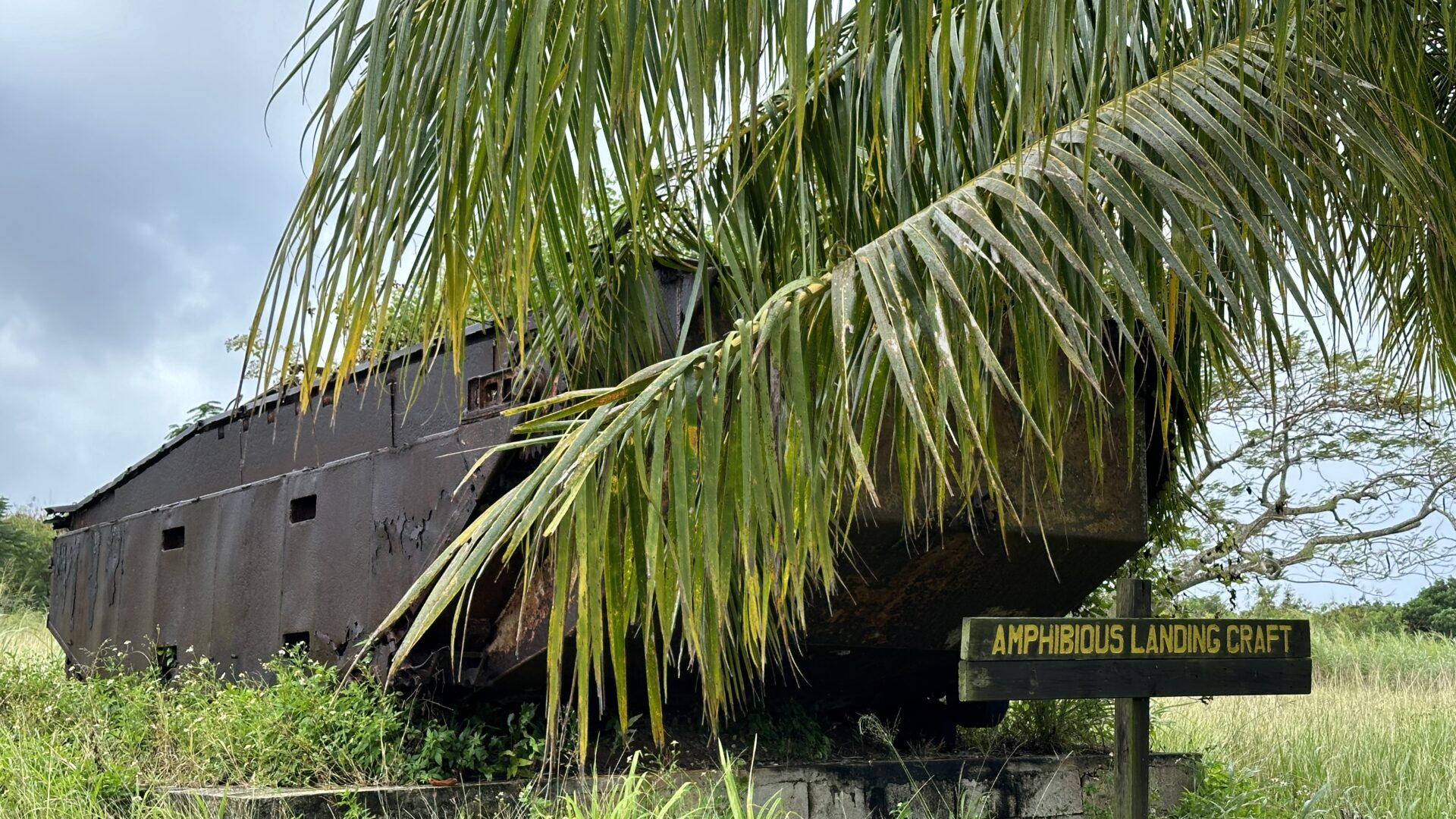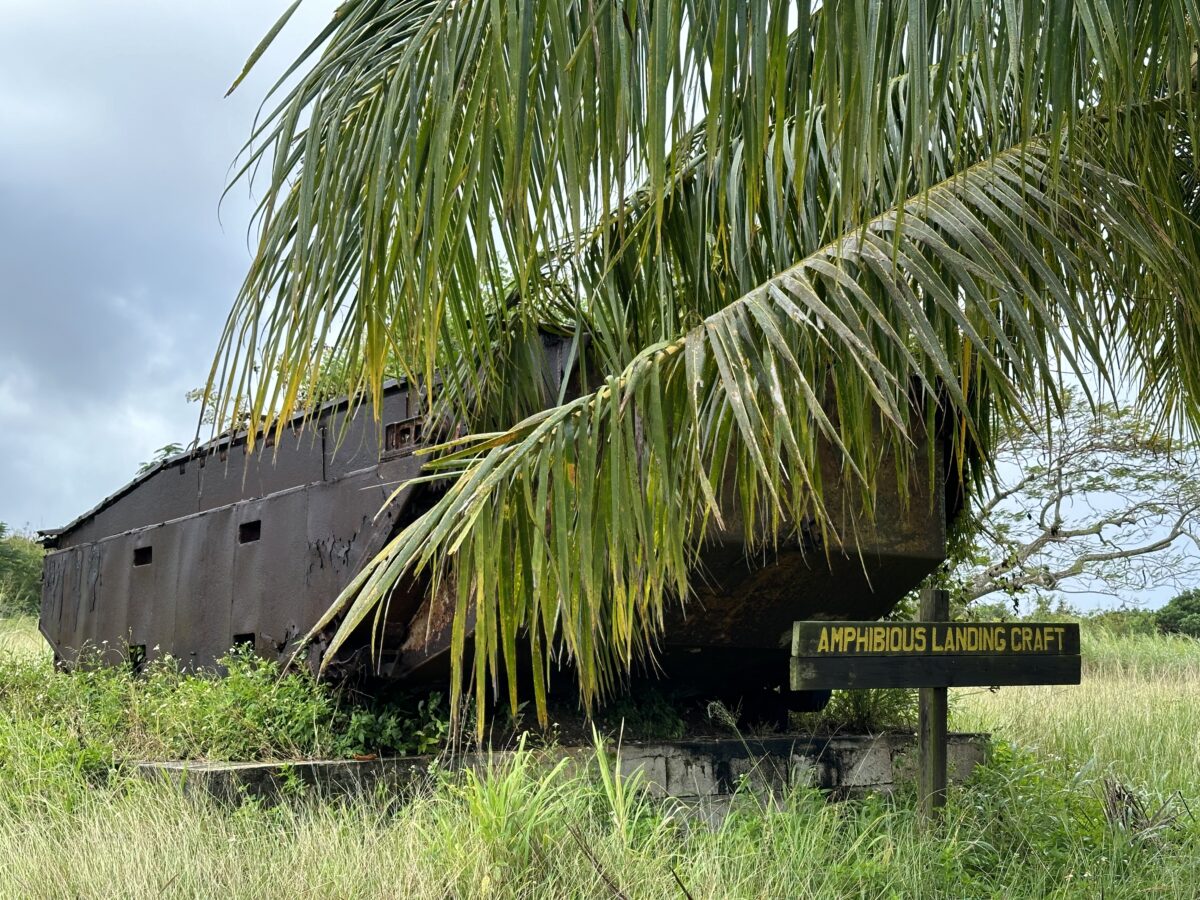American Memorial Park, Northern Marianas Islands
A visit to the War in the Pacific National Historical Park in Guam would not be complete without taking the time to visit the neighboring islands Saipan and Tinian in the US Commonwealth of the Northern Marianas (CNMI). Both islands were very important to the US war efforts in the Pacific. After Guam, Saipan is the second largest island in the Marianas, and offered the US a strategic base of operations. Tinian, although only 17 km long, provided them a flat airstrip.
The Battle of Saipan and the Battle of Tinian were important milestones in the War in the Pacific.
Battle of Saipan, June 15 to July 9, 1944
The Japanese were well established on the island of Saipan, having held it since 1920. It was a major source of sugar production. Along with a military garrison, there were about 26,000 Japanese citizens living there along with indigenous Chamorros and Carolinians.
In the battle to retake Saipan, the Americans landed some 71,000 troops. The fighting was similar to that on Guam – military bombardment from ships, followed by an amphibious beach landing under heavy fire, and then fighting through heavy jungle to finally take the highest peak – Mount Tapotchau. Once there, they slowly pushed the Japanese to the northernmost point of the island.
There the Japanese made one last banzai charge that failed. Rather than allowing themselves to be captured, Japanese military and civilians committed suicide – jumping from what is today called “Suicide Cliff”. Of the 32,000 soldiers, only 921 were taken prisoner. Hundreds of civilians died, most by suicide but some shot by their own troops. It is a pretty incredible story.
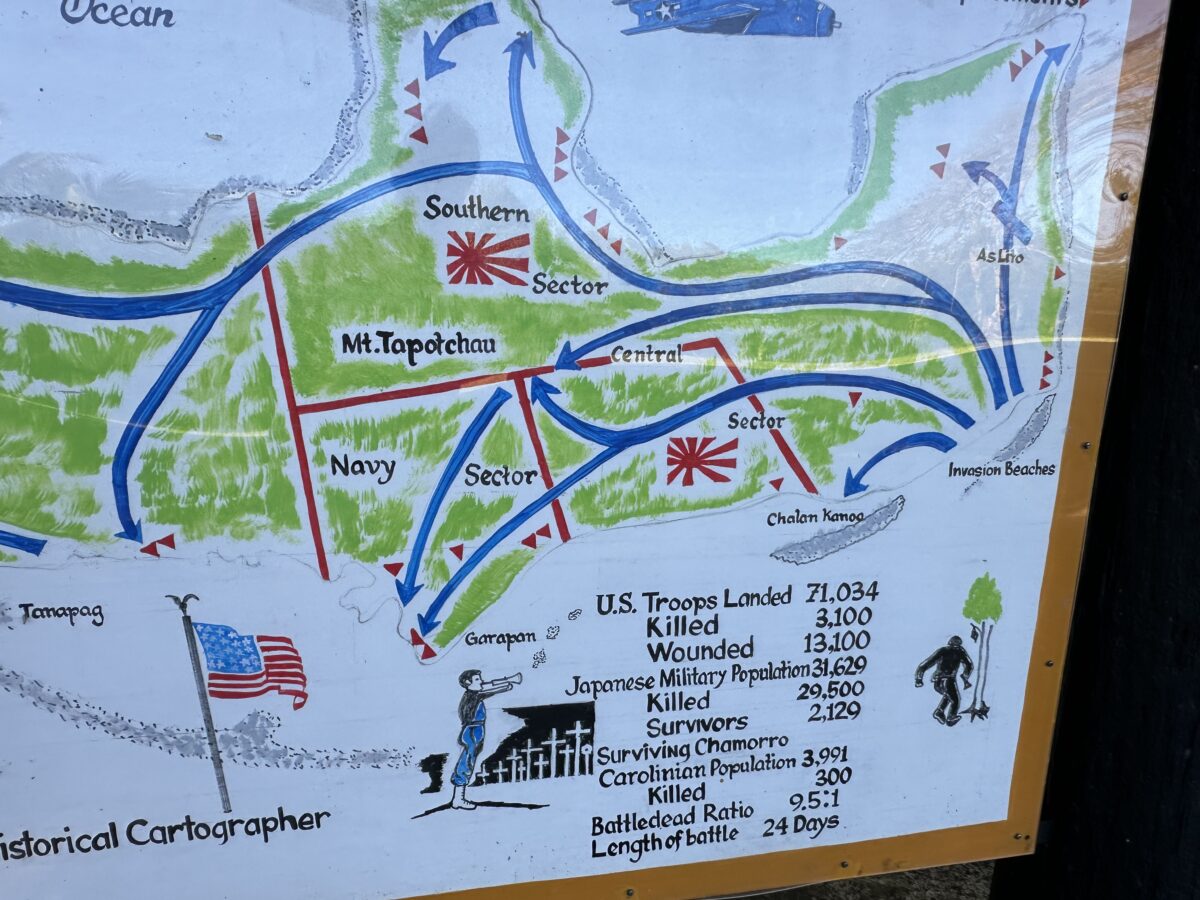
Capturing Saipan was critical to the war in the Pacific, providing the US a bomber base that they could use to launch attacks on Japan.
Battle of Tinian, July 24 to August 1, 1944
Just 26 kilometers away from Saipan is Tinian, a relatively tiny but flat island that held a Japanese airfield and a garrison of about 6,000 Japanese troops. They stood little chance against the 15,600 American troops that landed, although fighting was fierce.
Similar to Saipan, the Americans pushed the Japanese to the end of the island where they made their last stand in caves and limestone ravines, with many committing suicide rather than submitting to capture. Only 404 were captured, the remainder died.
Tinian’s airfield was hugely strategic to the Americans, with four 8,000 foot runways that could support giant B-29 bombers. In 1945 there were over 40,000 Americans stationed there and the airport was the largest and busiest in the world!
You may not recognize the name of the island, but on August 6, 1945 the B-29 bomber Enola Gay took off from here to drop an atomic bomb on Hiroshima killing an estimated 80,000 people. Three days later, on August 9, a second B-29 bomber left here for Nagasaki, killing another 40,000 people. On August 15, Japan’s Emperor Hirohito announced unconditional surrender.
Visiting Saipan and the American Memorial Park
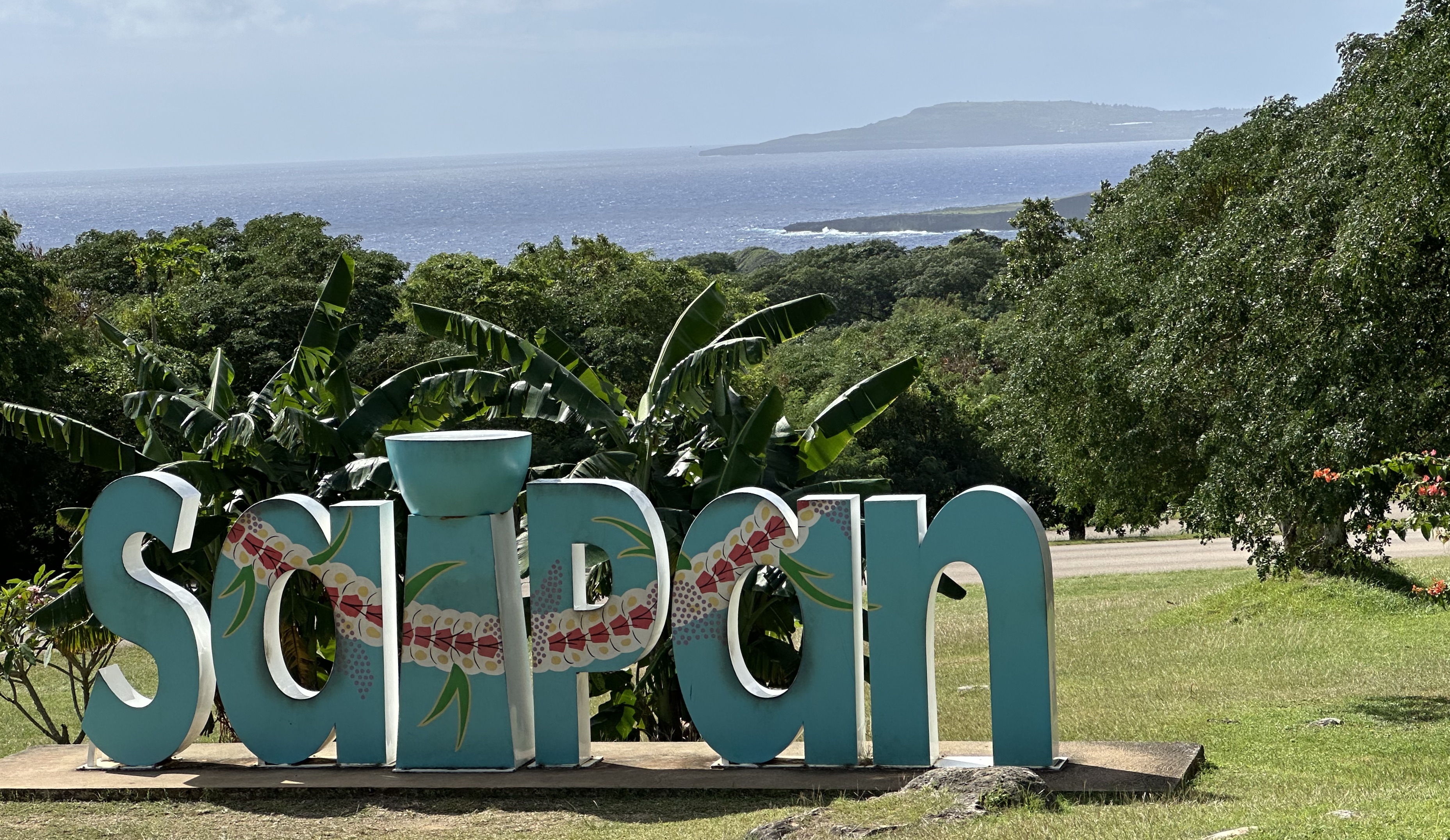
Only a 45 minute flight from Guam, Saipan is a lovely island to visit with lots of great hotels and beautiful beaches. The American Memorial Park in Garapan, Saipan is a must see extension to your visit to War in the Pacific National Historical Park in Guam
The American Memorial Park is managed by the National Park Service as an affiliated park or other designation. This memorial commemorates the courage and sacrifice of the US servicemen as well as all of the civilians who gave their lives during World War II.
American Memorial Park encompasses 133 acres of parkland alongside the beach. First stop should be the visitor center, where you can easily spend a couple of hours watching the film and visiting the exhibits that recount the battle from the perspective of the people who were involved. We found it really interesting, especially the accounts of Japanese civilians who were surprised at the compassion of US troops.
Walking outside around the park, you will visit a couple of memorials and you will see a number of Japanese pillboxes.
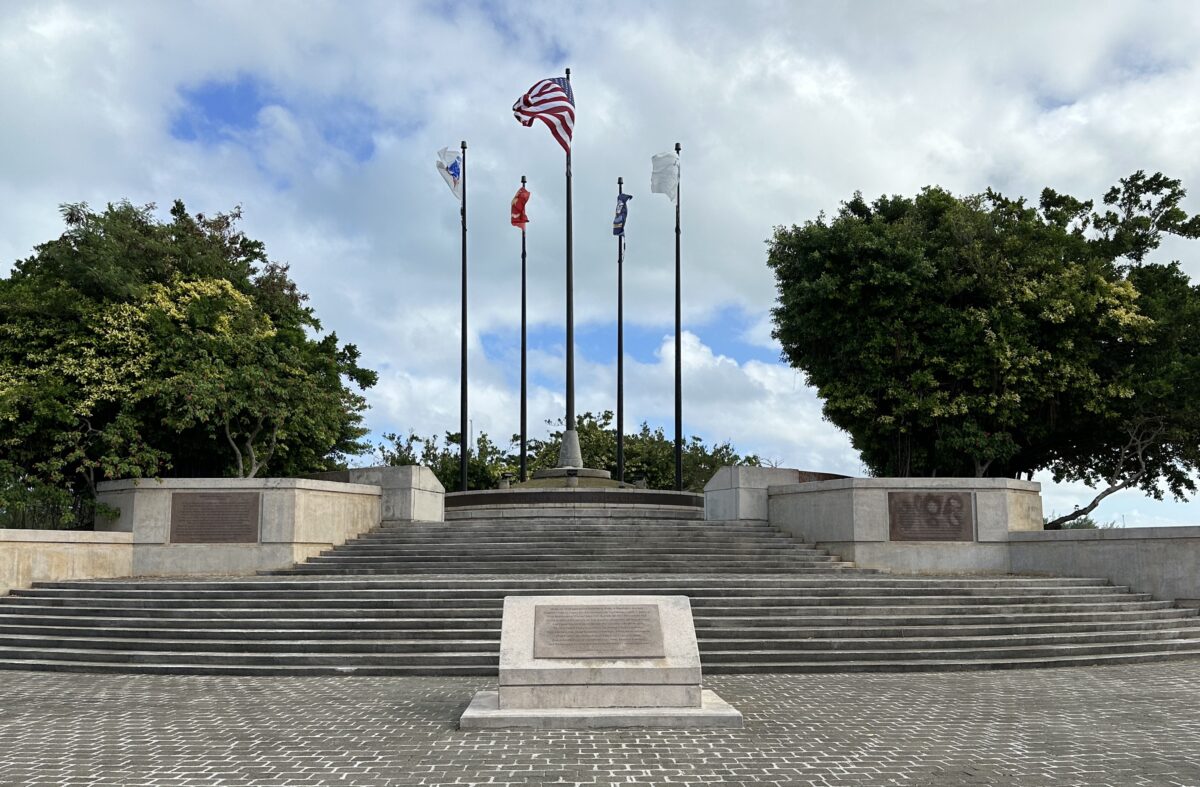
Driving around the island, you can see old Japanese installations – sugar plantations, tanks and bunkers, and an old Japanese jail.
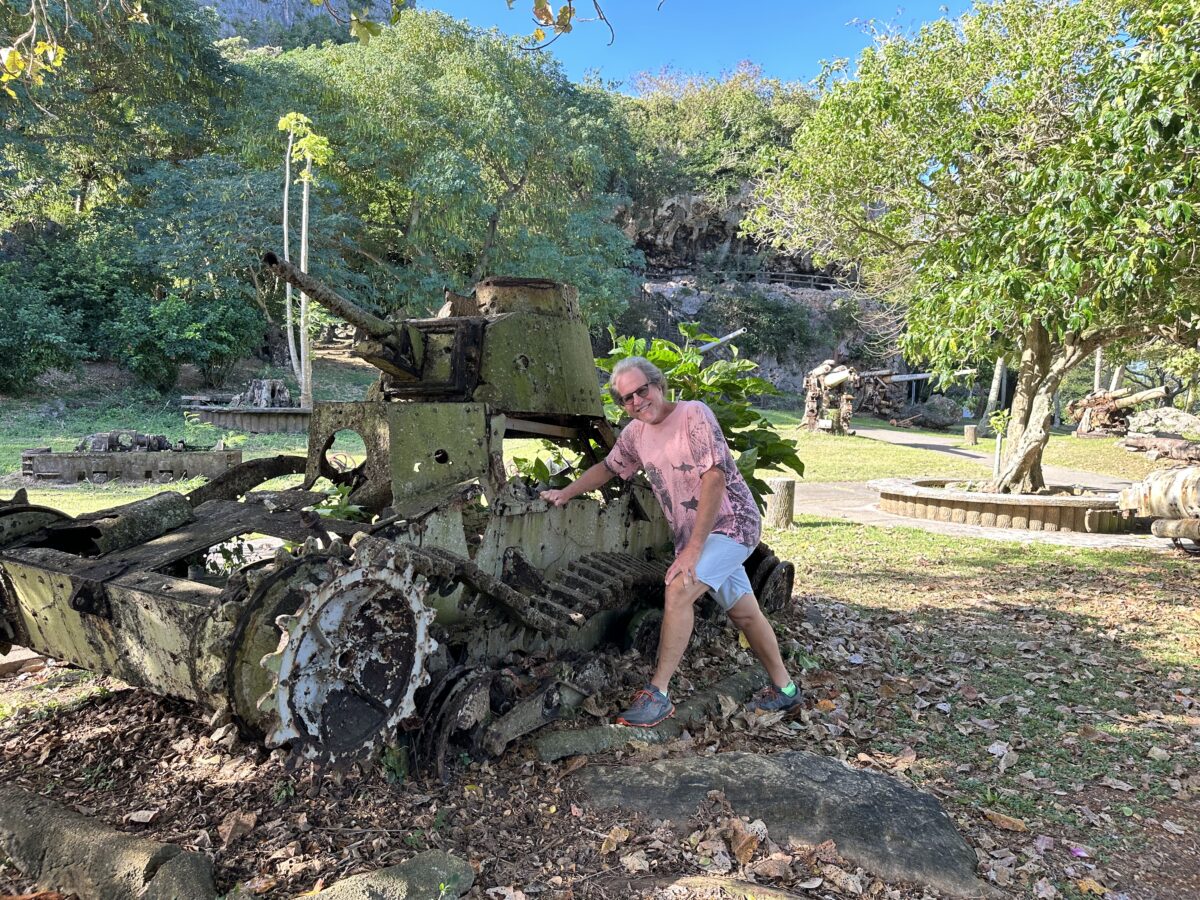
You can also visit the last Japanese command post.
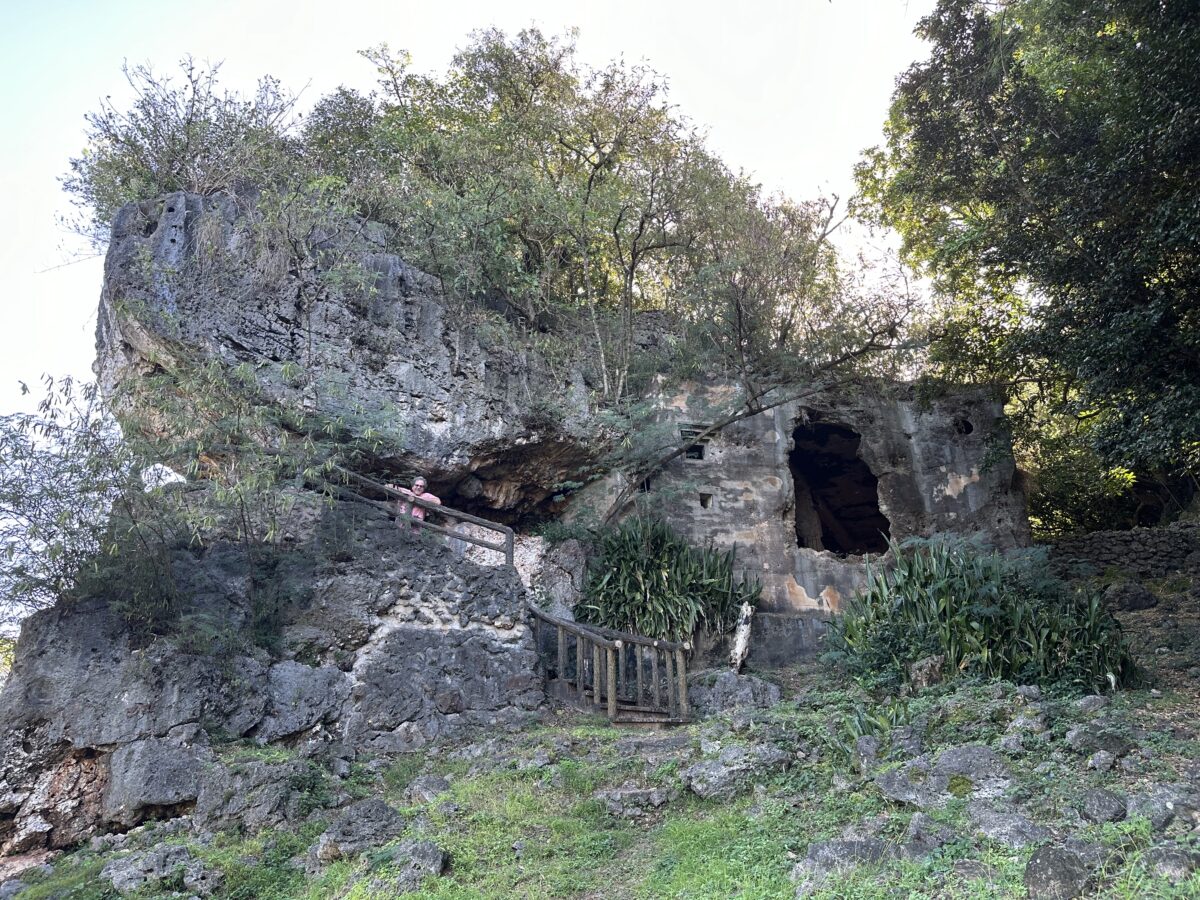
Be sure drive to the top of Mount Tapotchao. It’s an amazing view and you can see how hard it would have been for the US Marines as they spent 10 days of uphill fighting from the beaches where they landed. More than 5000 Americans died to take Saipan.
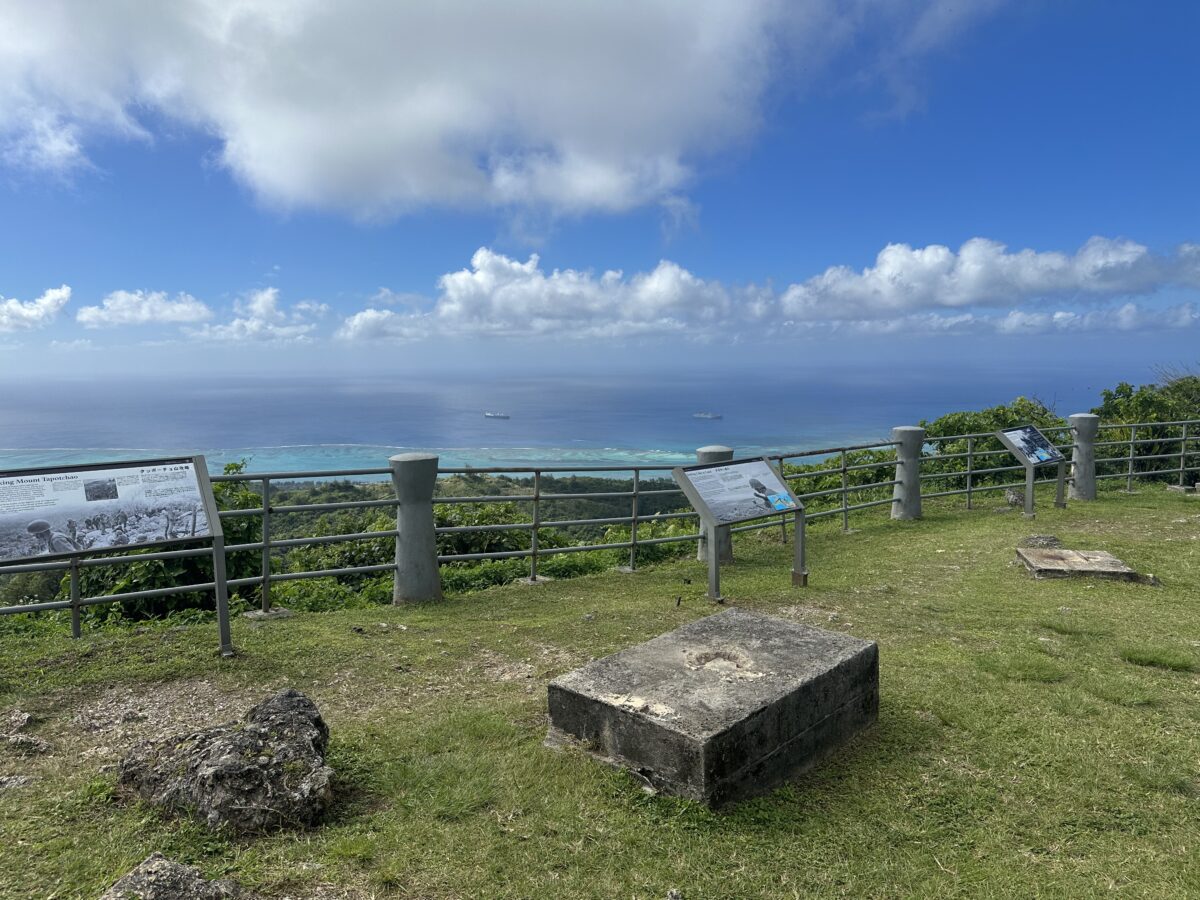
At the northernmost end of the island are Suicide Cliff and Banzai Cliff.
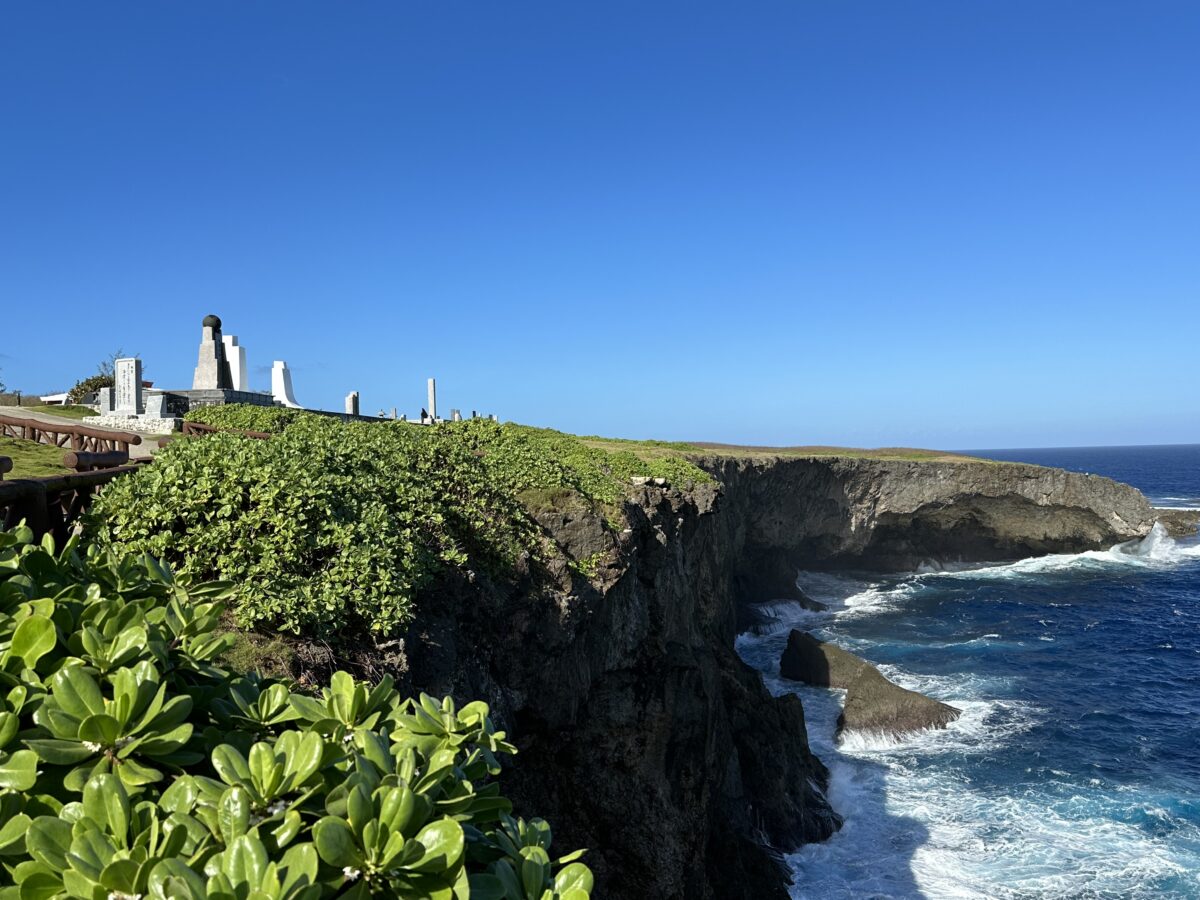
There are memorials to both Japanese military and civilians who jumped to their death at the command of their Emperor. It is incredibly moving.
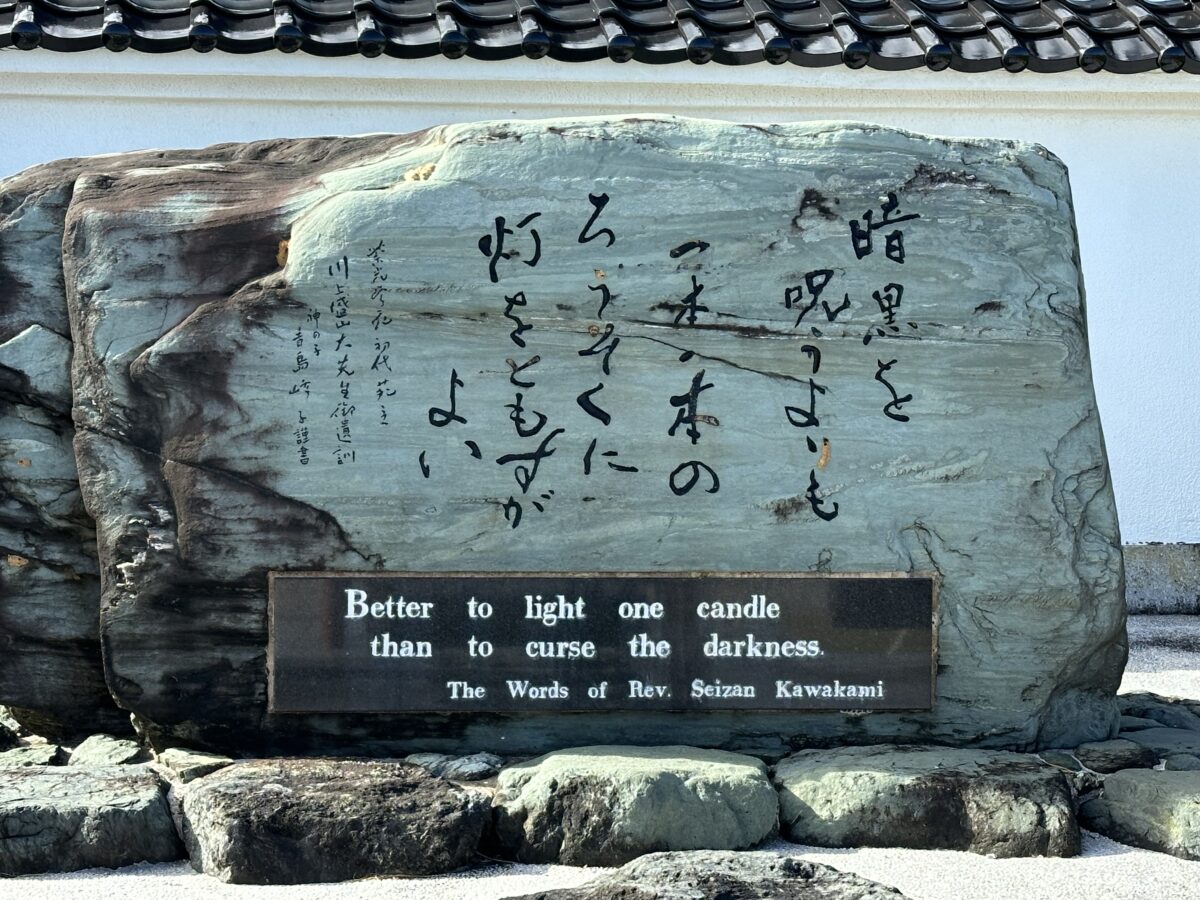
Visiting Tinian
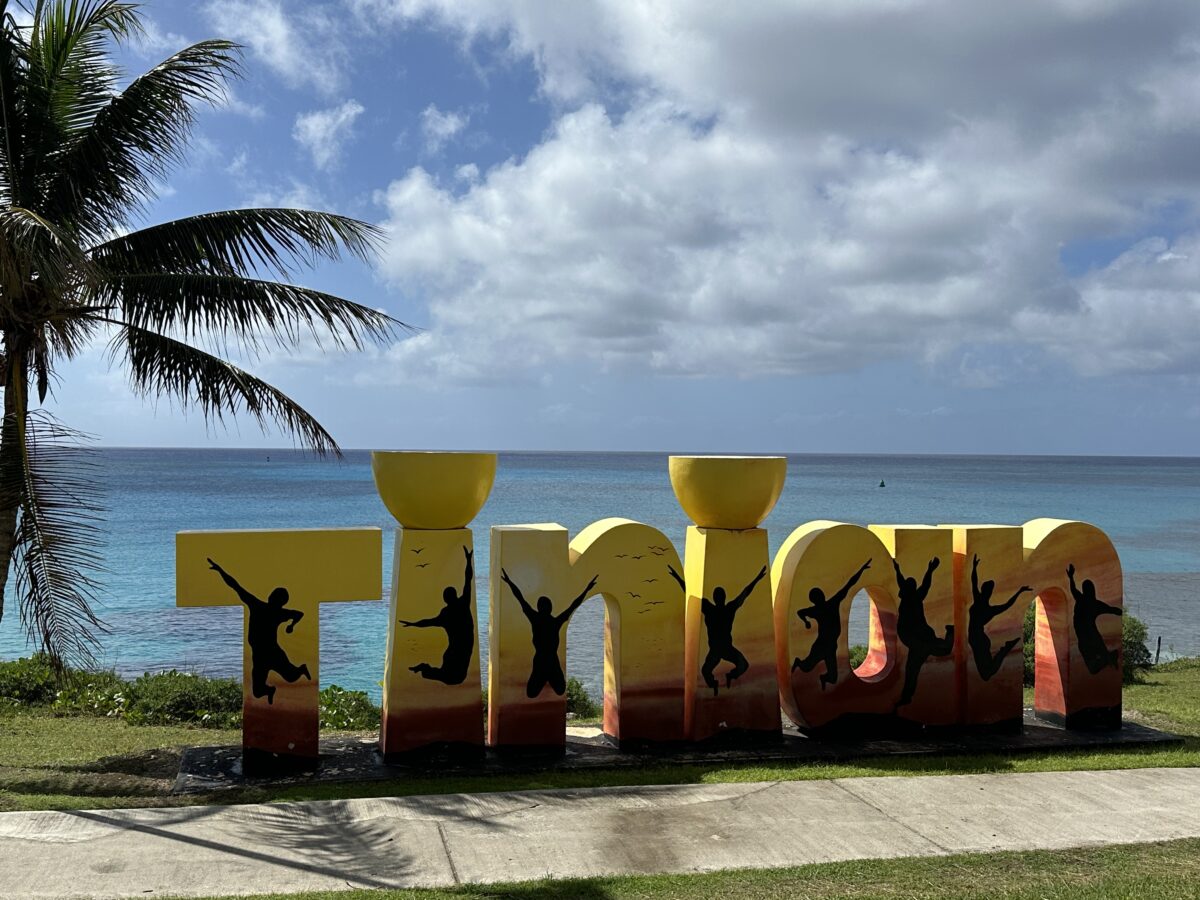
A short 8 km hop from Saipan is the island of Tinian. You can fly over for the day, rent a car and visit the airfield where the first nuclear bombs were loaded onto the bombers heading for Japan.
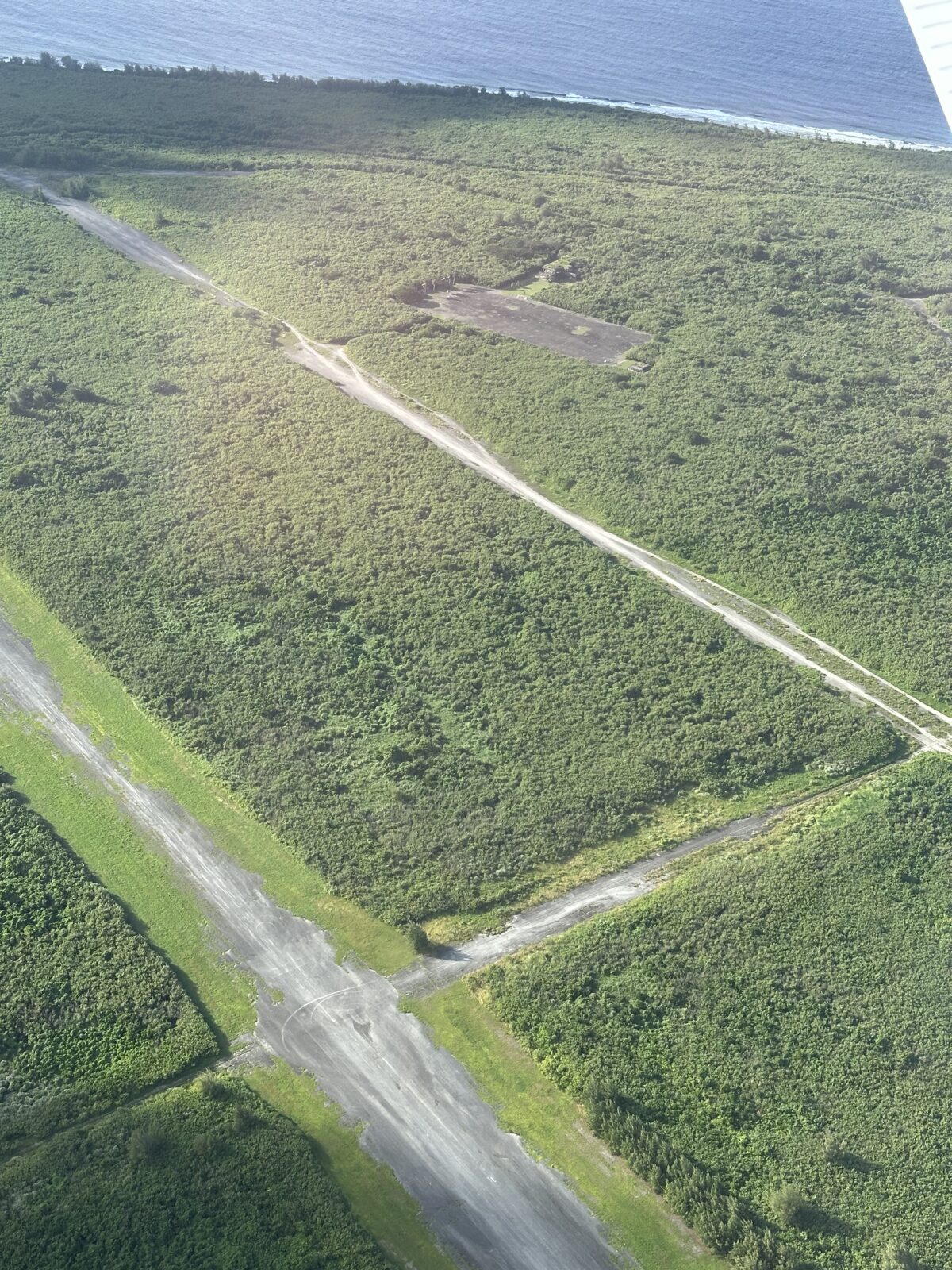
You can drive on the abandoned runways on North Field, and visit the preserved bomb pits specially made to accommodate the atomic bombs.
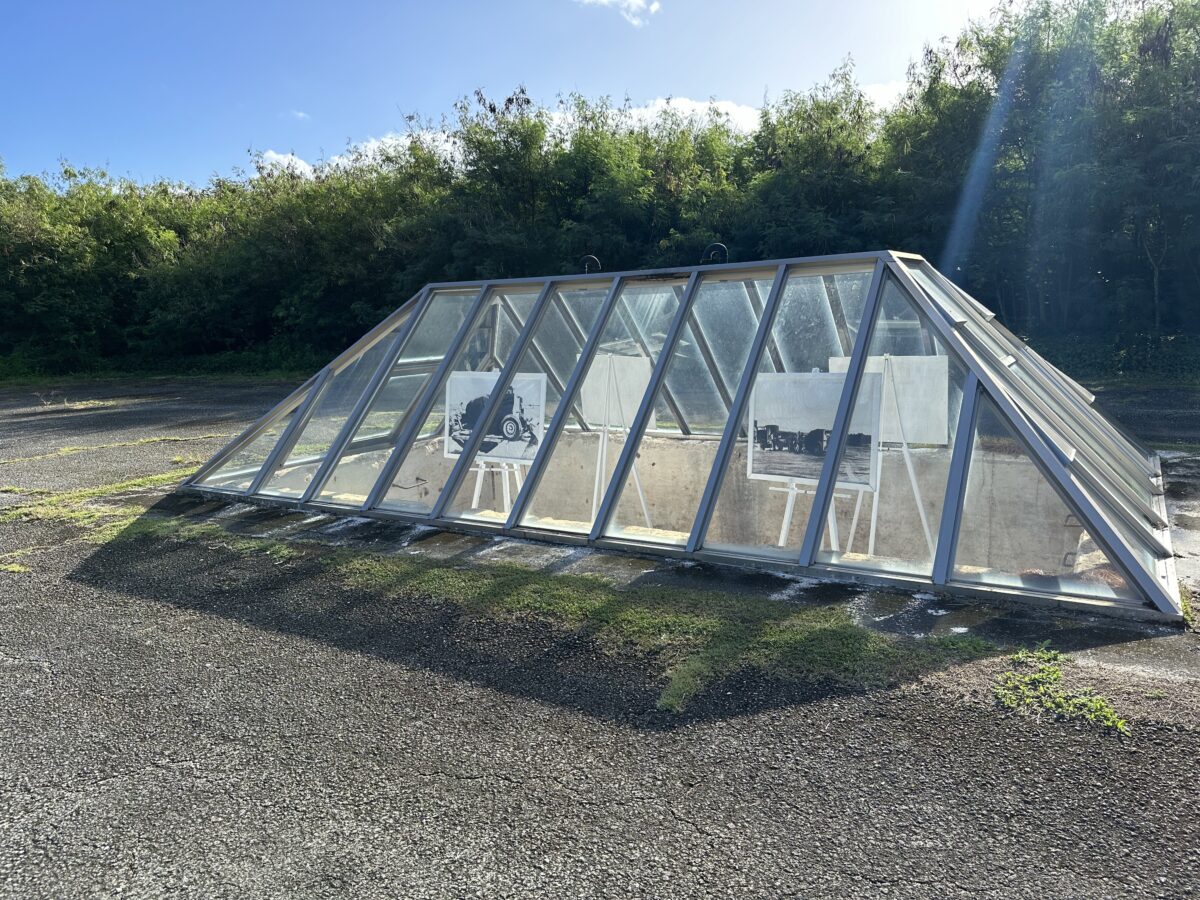
There are also Japanese air raid shelters, open for you to walk into.
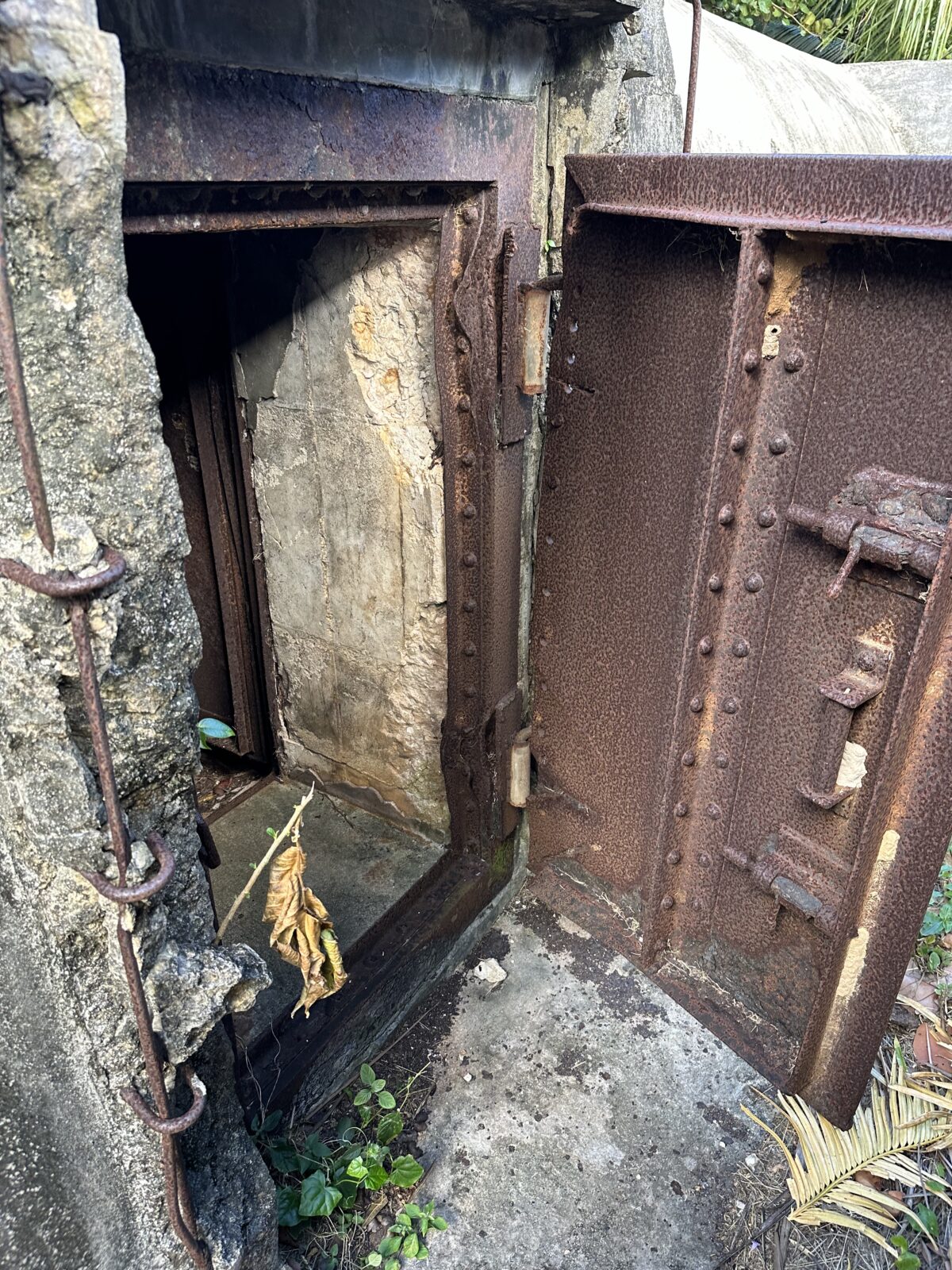
And the original Japanese air administration building.
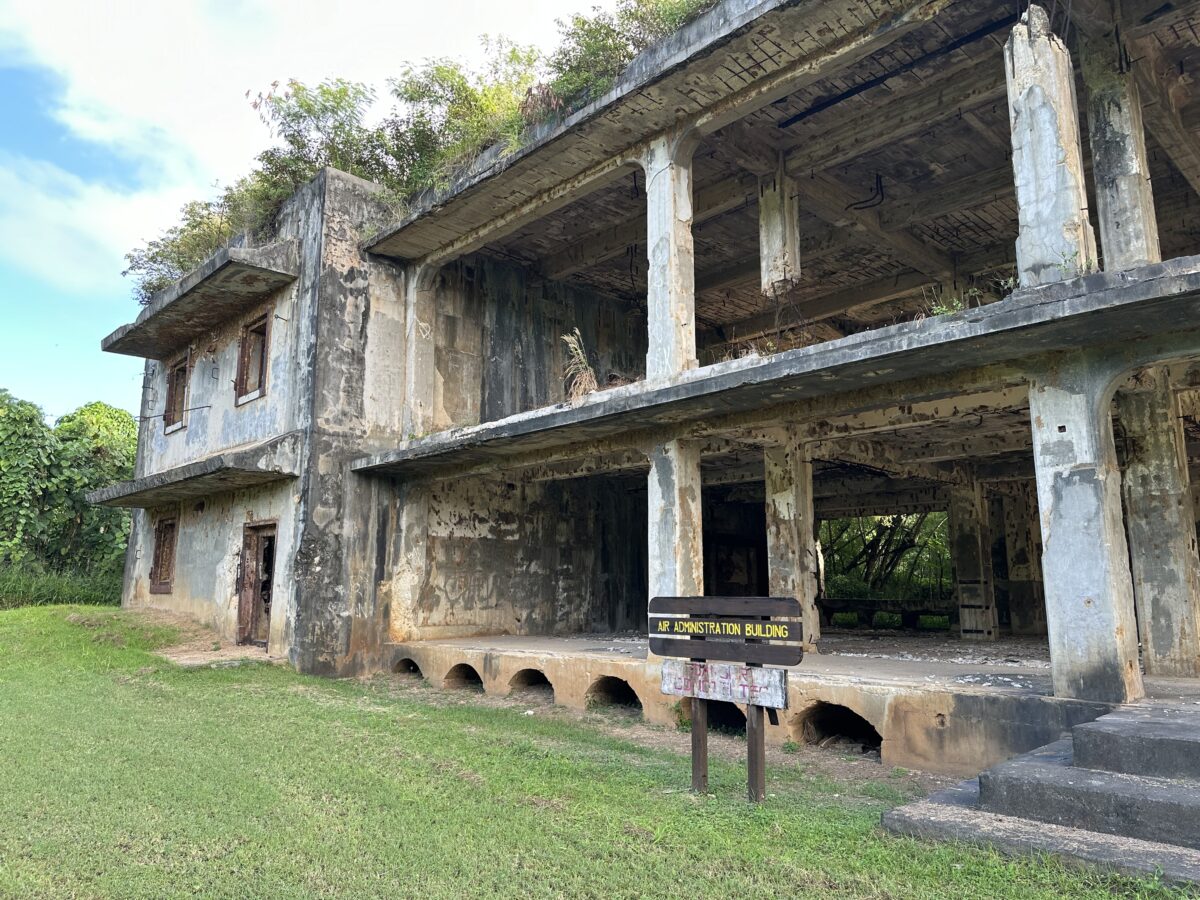
As you drive around the island you will see evidence of the Japanese inhabitation of the island, as well as remnants of the Chamorro culture. Walking around the enormous Taga stones you will wonder how they were ever quarried and moved, without modern machinery.
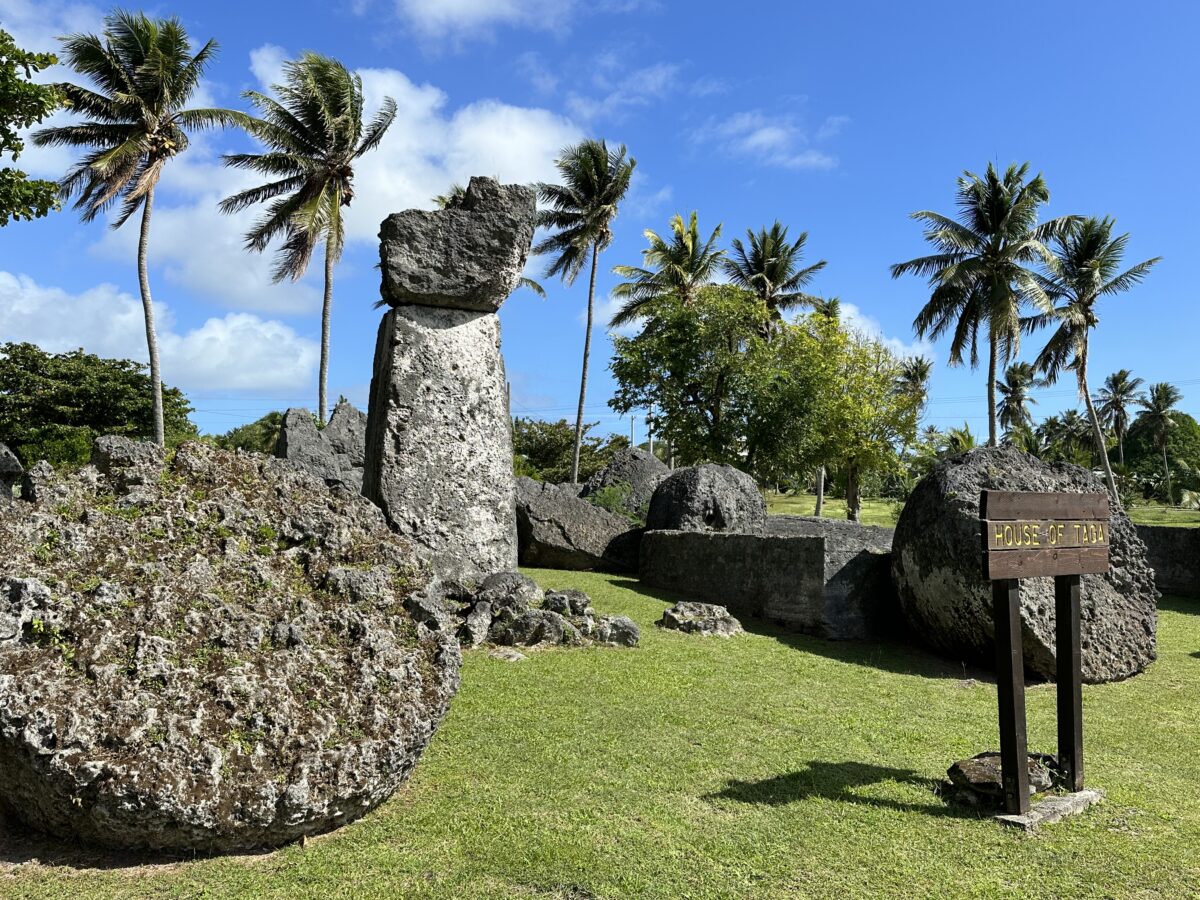
The island is only 20 km long and 5 km wide, so you can easily see all the sights and still have time to enjoy a remote beach and some snorkeling in the peaceful waters. Scuba divers will want to stay longer to explore some of the amazing dive spots with lots of World War II wreckage.
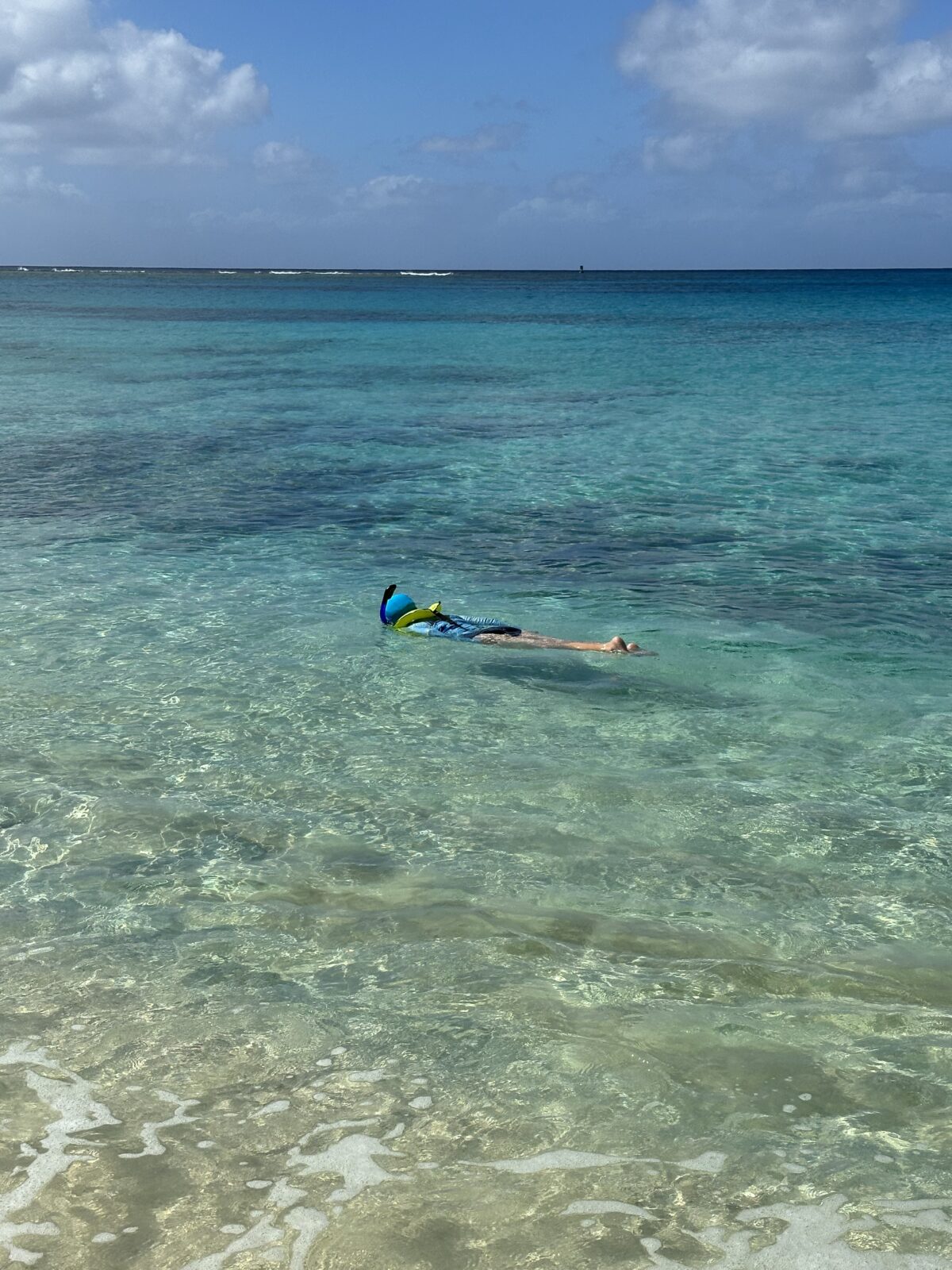
The Island of Rota
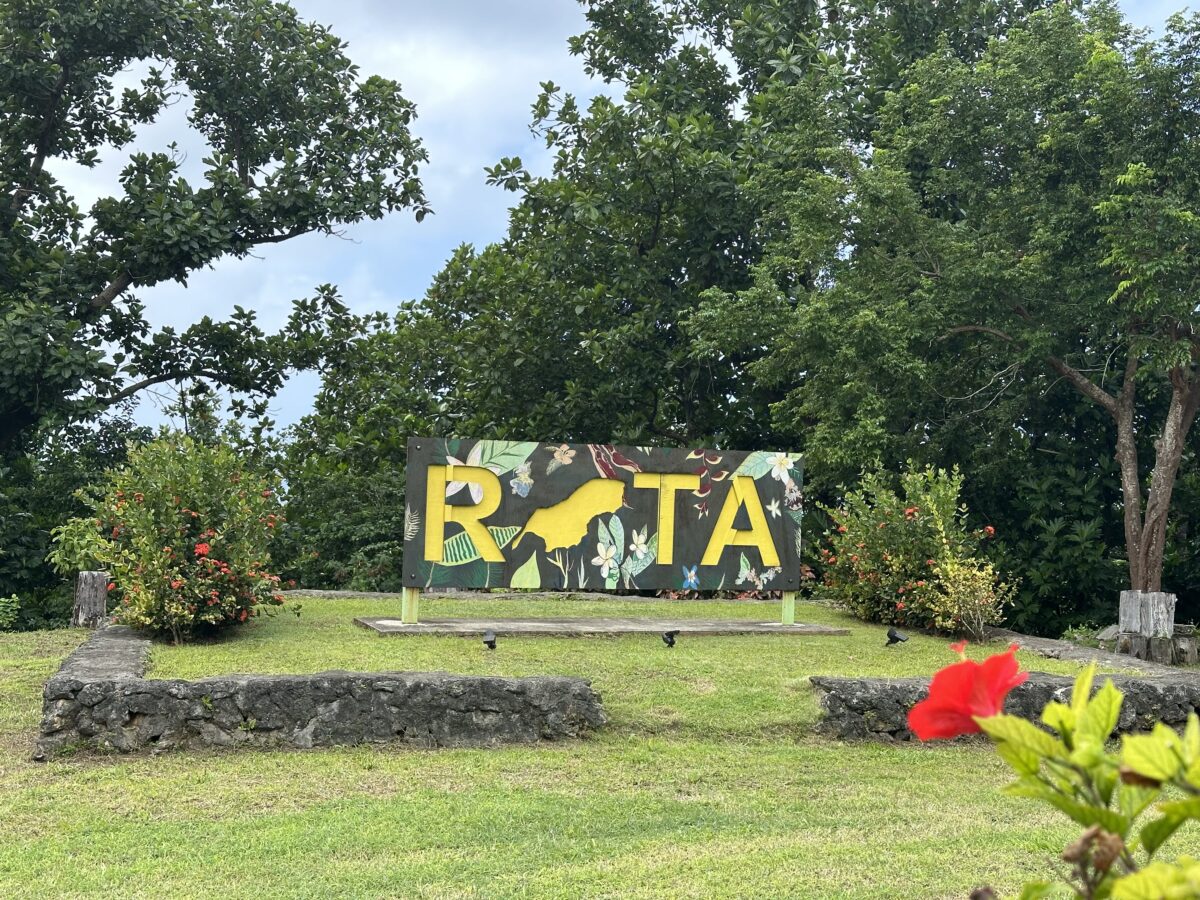
Our favorite island in CNMI is the tiny island of Rota, just 19 km by 8 kn wide. Although this island never saw fighting in World War II, there is still evidence of munitions that were dumped there. You can explore an old abandoned Japanese hospital in a cave.
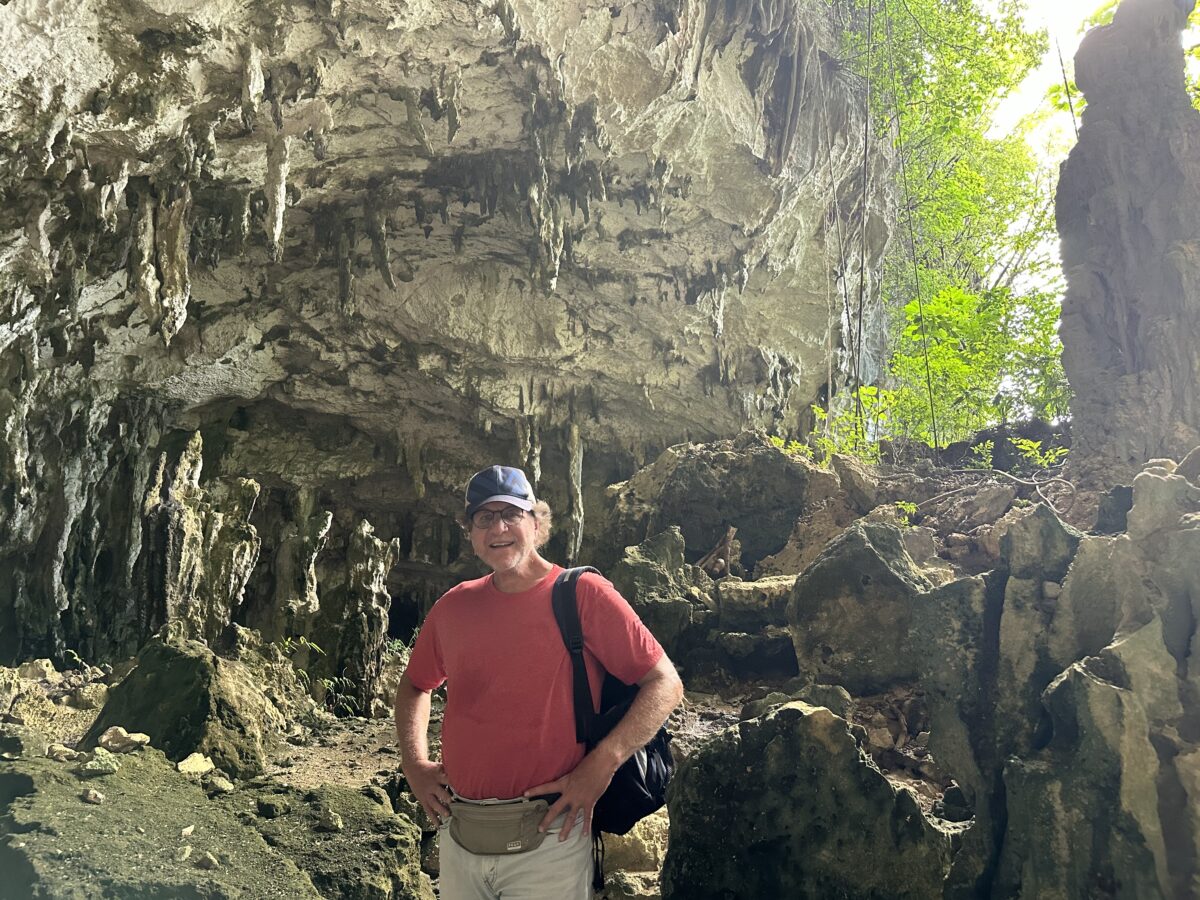
You will also see fortifications like gun emplacements and Japanese canon.
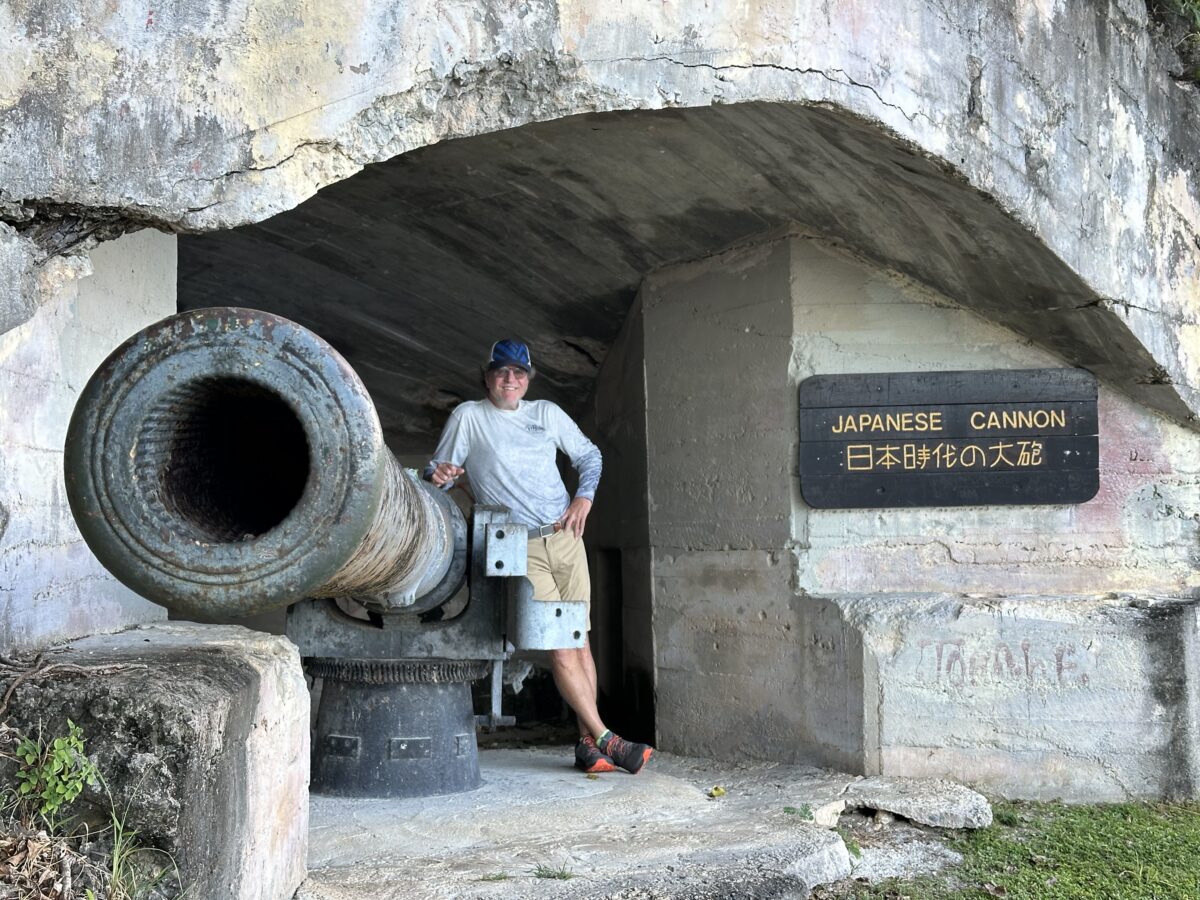
But we didn’t just go for the history. We enjoyed visiting an unspoiled destination where there are relatively few tourists and friendly, welcoming people. There are lovely places to walk in the jungle, along deserted beaches, and atop rugged cliffs where you can watch sea turtles swimming offshore.
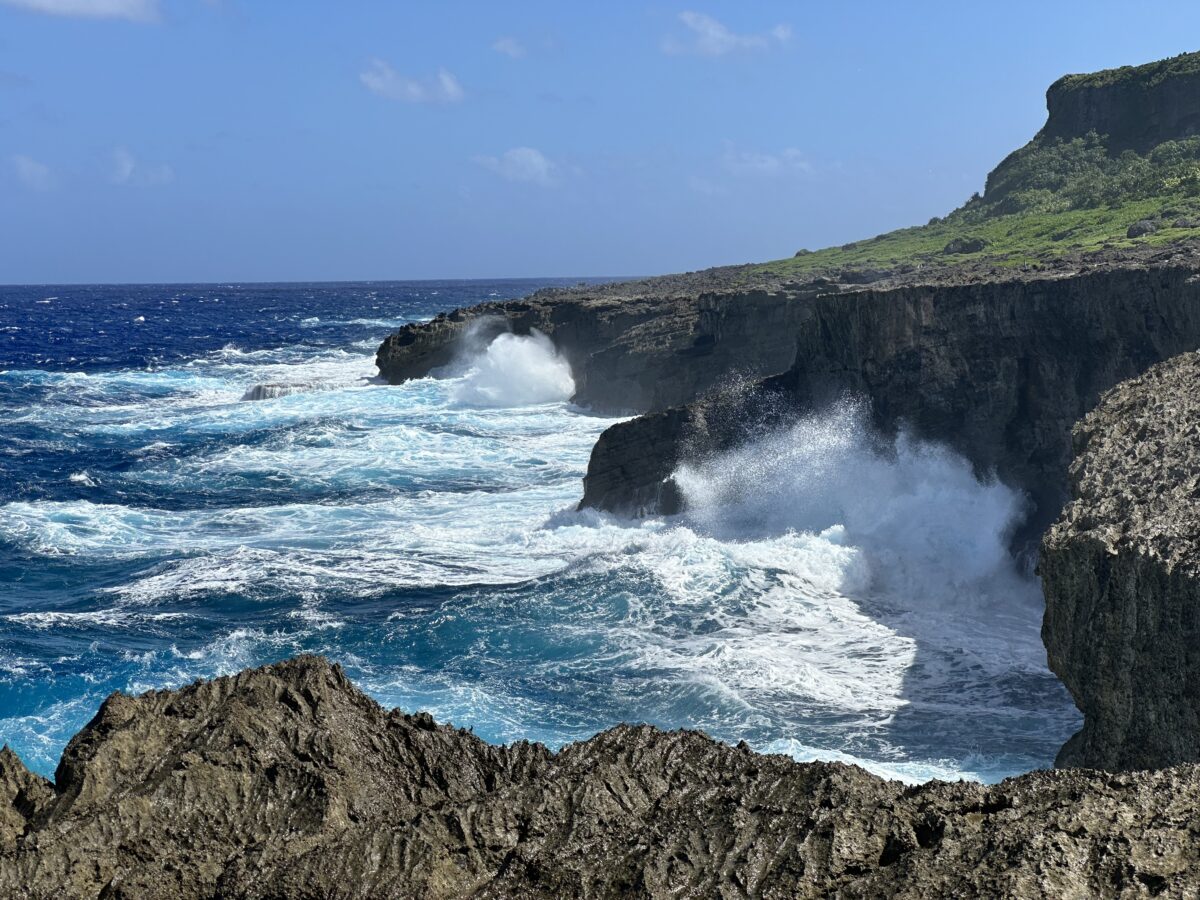
You can also visit the Taga stone quarry and ancient Latte stone villages, and wonder again at how the heck they moved those huge stones.
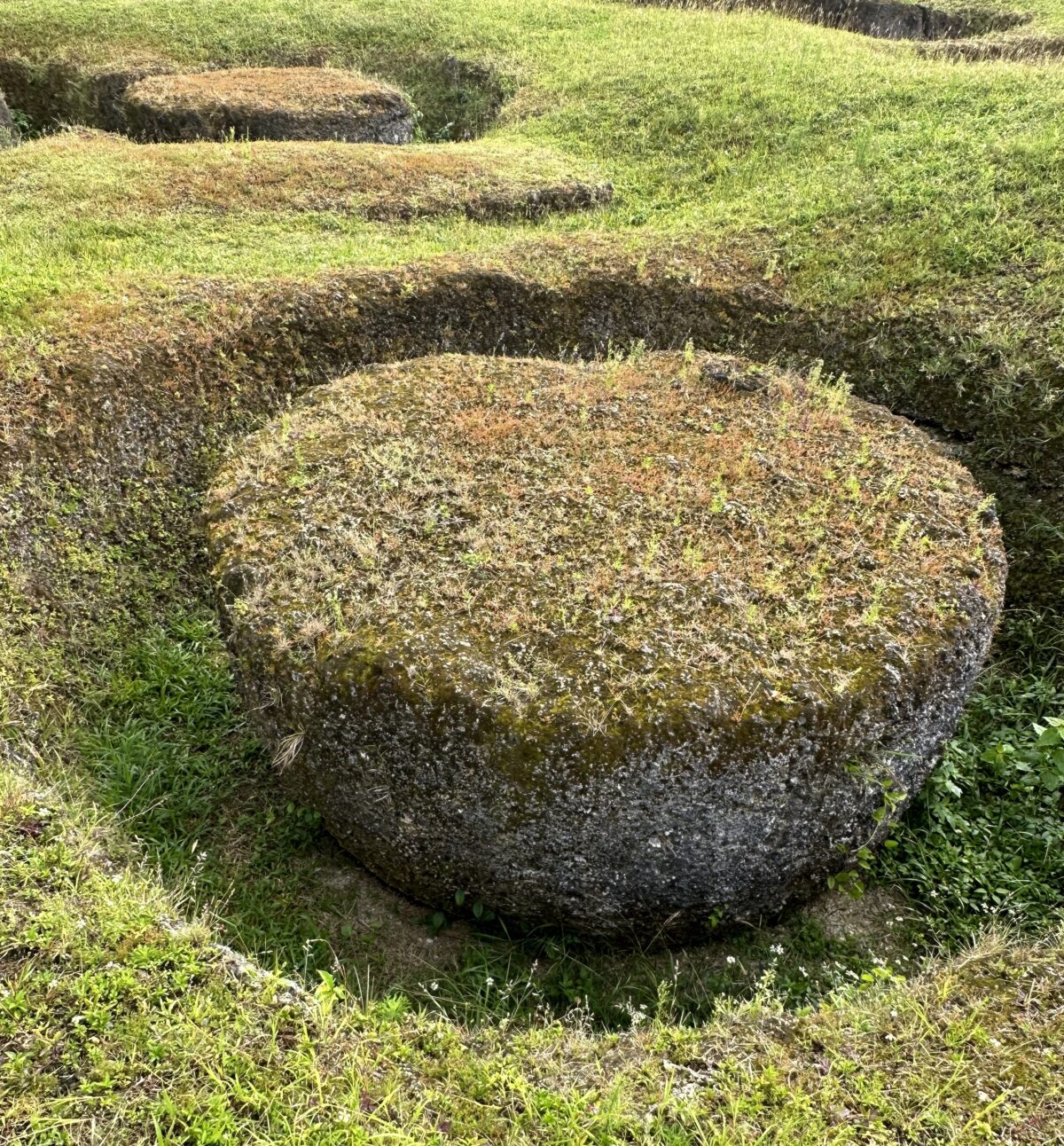
We especially liked the bird refuge with the seabirds soaring over the rugged cliffs and huge fruit bats flying overhead.
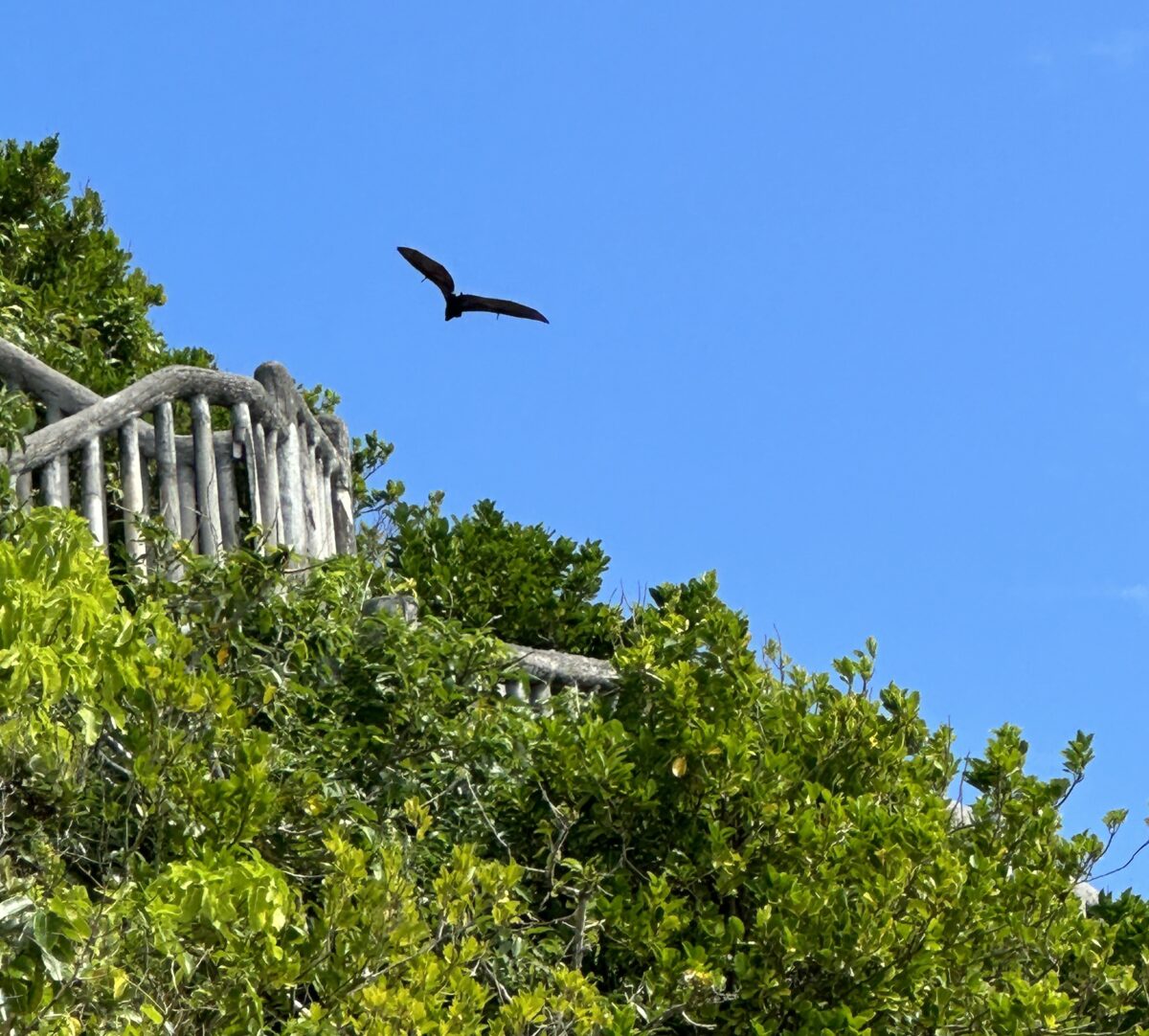
There are only two towns on the island and only a very few places to stay, and just a handful of restaurants. You can see that it had once been a big destination, but infrequent air service has devastated tourism. So unlike many places you can visit, the local people are very happy to see you. It is a lovely place simply decompress.
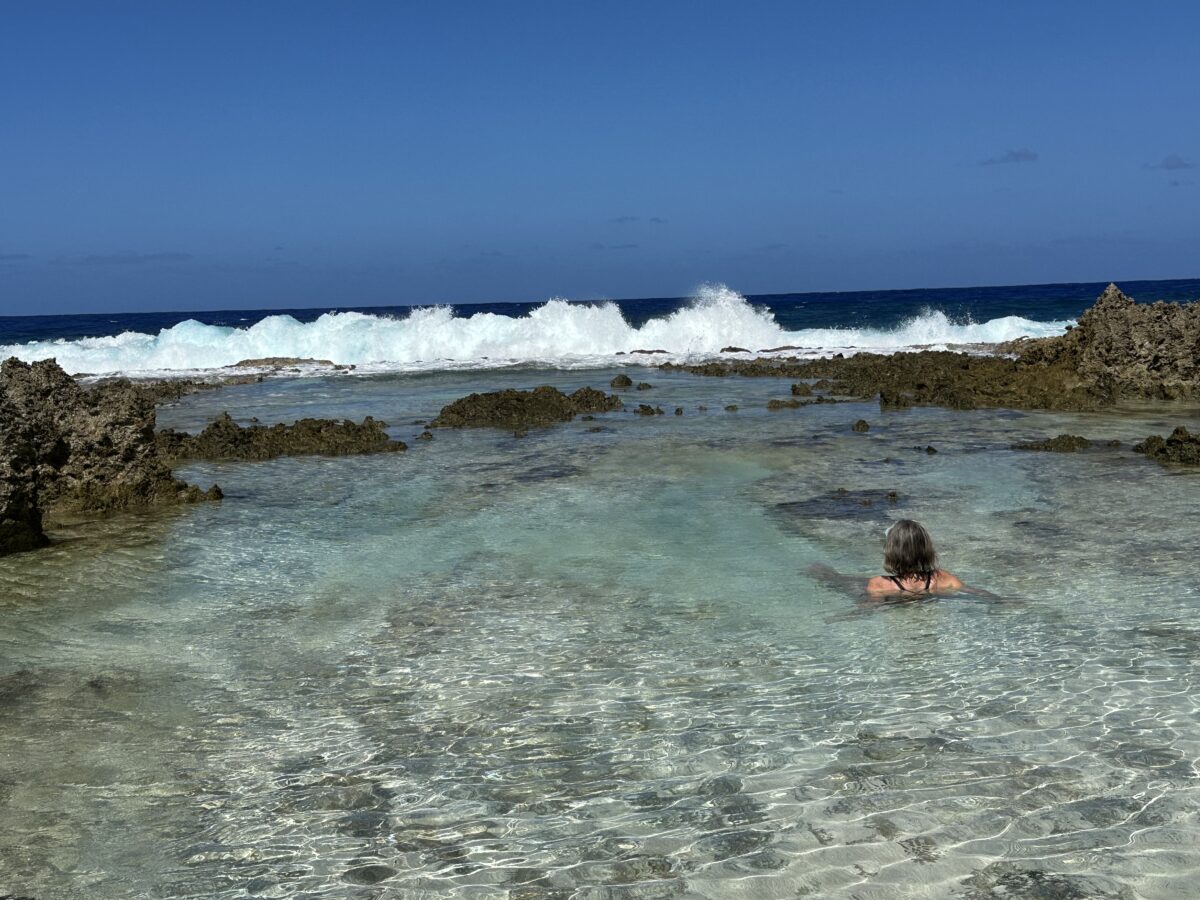
If you visit Guam, and perhaps Saipan and Tinian, we would highly recommend taking the extra time to visit Rota. Say hello to our friends at the Hotel Valentino!
Are you trying to visit all the National Parks, or National Park Units?
If your goal is to visit them, one or all, we’d love to help you strategize. Give us a call at (480) 609-3978 or drop us a note here. We always enjoy talking with people who share our passion for visiting these gems of the National Park Service.
#FindYourPark
#SeeAmericaFirst
